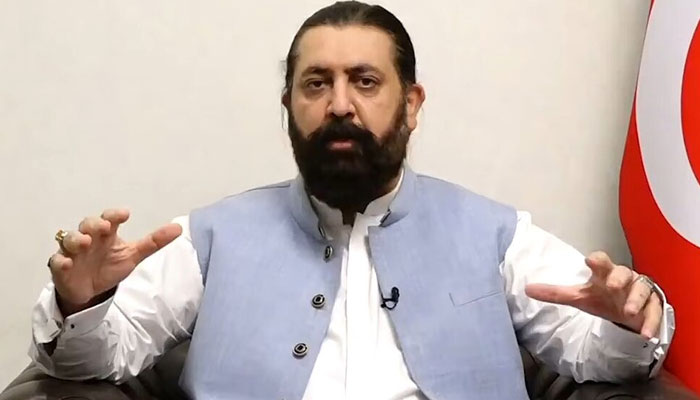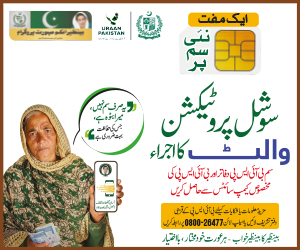‘Pushed and Kicked’: Women Journalists Face Violence While Covering Protests
By: Sheraz Ahmad Sherazi
While covering a rally of the Pakistan Tehreek-e-Insaf (PTI) and attempting to keep up with the moving conoy of former Prime Minister Imran Khan, journalist Sadaf Naeem tragically lost her life in 2022 after being crushed by a moving container. Two years after this horrific incident, as political protests continue, neither political parties nor authorities have made any significant changes to ensure the safety of journalists on the ground.
The case of Zahida Rao, a journalist from ABN News, underscores the continued threats women journalists face while reporting. On October 4, 2024, while covering a protest at D-Chowk, she was confronted by police officers who snatched her phone, pushed her, and prevented her from continuing her work. Zahida took to social media to highlight her ordeal but refrained from filing an FIR.Her experience is part of a broader pattern of attacks against journalists and media workers covering protests. Several other journalists were also targeted during the incident, underscoring the growing risks faced by the press in such environments.

The response from PTI to incidents involving journalists has remained inconsistent. While PTI spokesperson Sheikh Waqas Akram expressed concern over Zahida Rao’s treatment and reiterated the party’s commitment to press freedom, no specific safety measures have been developed by the party in the aftermath of Sadaf Naeem’s death. “The safety and dignity of journalists are our top priorities. However, managing large crowds is challenging. We are working to ensure such incidents do not happen again,” he stated.

In response to the incident, delegation of journalists covering PTI protests met with Inspector-general of police (IGP) Islamabad to discuss preventive measures. The IGP expressed regret and assured steps were being taken to avoid such incidents.
“We deeply regret the incident and any discomfort caused to Ms. Zahida Rao during her coverage,” he stated. “Journalists play a critical role in keeping the public informed, and their safety and ability to work freely are priorities for us. To ensure journalists are easily identifiable in such high-pressure situations, we will be providing them with distinctive jackets or vests. This will help law enforcement officers recognize members of the press and avoid unnecessary interference.”
However, despite assurances of press freedom and journalist safety, just a month later, during another wave of protests, another female journalist—along with several other journalists and media workers—was also attacked. This time, she was wearing a press jacket, clearly identifying her as a member of the press. On November 26, 2024, during a PTI protest at D-Chowk, Qurat-ul-Ain Sherazi from Independent News was physically assaulted by protestors who demanded she leave the scene.

“I was pushed and kicked by PTI supporters while recording at D-Chowk,” Sherazi recounted. “I was struck with a stick or something similar, and my leg started bleeding. My colleague was also manhandled. This all happened despite us being clearly identifiable as members of the press.”
Sherazi expressed her disappointment over the lack of institutional support following the attack. “No one from any journalistic organization contacted me or condemned the incident,” she said.
A similar incident occurred on March 8, 2024, during a protest at the National Press Club in Islamabad. Sabeen Shehbaz, a journalist from GNN News, was brutally attacked by a protester during a Women’s Day rally. “I was covering the march when a group of transgender protesters surrounded me. I was hit repeatedly, and I still don’t know why I was targeted. There were no safety measures in place, and nobody intervened,” Shehbaz recalled.

The National Press Club has acknowledged these challenges and claims to be working with media houses and police to improve conditions. “What happened to Sabeen Shehbaz on Women’s Day is unacceptable. We are pushing for better protective measures for all reporters, especially women, who face additional risks,” said Nayyar Ali, Secretary of the National Press Club.
Mehwish Qamas Khan, another journalist, faced gender-based discrimination when she was denied access to a Jamiat Ulema-e-Islam (JUI) sit-in on Kashmir Highway in Islamabad. “I arrived at the site to do my job, but I was stopped at the entrance. They told me women weren’t allowed. This wasn’t just an attack on my profession but an attack on women’s right to report freely.”

Following the incident, JUI spokesperson Aslam Ghauri acknowledged the mistake and assured that measures had been taken to prevent such occurrences in the future. “We deeply regret the inconvenience caused to Ms. Khan. We recognize the importance of allowing all journalists, regardless of gender, to carry out their duties and have rectified the issue.”

Meanwhile, media organizations have done little to address these safety concerns. When asked about measures for female journalists covering protests, Sadaqat Shah , an executive at AIK News, provided a vague response: “We are aware of the challenges female reporters face, but the situation on the ground is unpredictable. We offer basic safety training, but field coverage is a different ballgame.”
However, there was no clear indication of how often AIK News provides safety training, to whom, or whether their staff covering the protests were adequately trained. Additionally, there is no consensus among media houses on how political parties should engage with journalists to ensure their safety during volatile events.
Civil society organizations, including the Digital Rights Foundation (DRF) and The Coalition for Women in Journalism (CFWIJ), have consistently raised concerns about the deteriorating safety conditions for female journalists. “Islamabad has become a difficult city for female reporters, especially during protests and political rallies,” a DRF Law officer Fahad Wazeer stated. “The harassment and violence they face are unacceptable, and without adequate safety protocols, these women are left at the mercy of hostile crowds.”
The Pakistan Federal Union of Journalists (PFUJ) has also condemned the harassment faced by female reporters, calling for strict action against those responsible. “These incidents are a direct violation of press freedom. Female journalists have the right to report without fear of harassment or violence. We demand that both the police and media organizations take immediate steps to prevent such incidents in the future.”
Despite these calls for action, little has changed on the ground. Two years after Sadaf Naeem’s tragic death, women journalists continue to face abysmal safety conditions while covering protests, with no meaningful reforms from political parties, authorities, or media houses.

The recurring violence against women journalists during political protests is a grave threat to press freedom and democratic accountability in Pakistan. As the country approaches another period of political mobilization, it is imperative that government bodies, media organizations, and international watchdogs take urgent and coordinated action to implement robust safety protocols for journalists, particularly those reporting from the front lines. The government must enforce clear protection measures, media houses must establish emergency support systems, and law enforcement must be trained to respect press rights in high-tension environments. Without immediate, tangible steps, the cycle of abuse will continue, endangering lives and silencing essential voices that inform the public. Protecting journalists is not only a matter of professional ethics—it is a national responsibility and a fundamental pillar of democracy.






Comments are closed, but trackbacks and pingbacks are open.